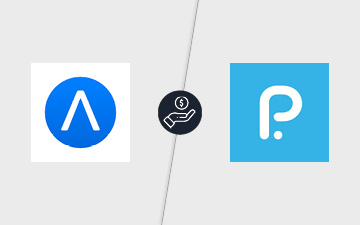For this first battle of 2021, we compare two payment applications between relatives: Lydia and Pumpkin. The advantage of these applications? Immediate repayment between friends in just a few clicks via a phone number. No more need to go through the traditional tedious steps of collecting an IBAN, adding it to a list of beneficiaries and the action of a transfer order (which will sometimes be received within 48 hours). Let’s find out together which application has the least carbon impact and the least consumption for your smartphone.

About Lydia: Created in 2011 this French fintech specializes in mobile payment and allows its users to pay and manage their money from the application.
About Pumpkin: Created in 2014 the French application offers payment between relatives and recently allows its users to take advantage of cashback.
The fight
All the spotlights are on the fighters, and the match can finally begin.
In the first part of the battle to measure the impact of the launch phase of the application, on this side, Lydia (0,104 g eqCO2) wins the first round by impacting 2% less than the Pumpkin application (0,106 g eqCO2).
During the second round which corresponds to the usage scenario, collecting a payment, Lydia takes the lead (0.181 g eqCO2) which leads against Pumpkin (0.314 g eqCO2) with a 42% lower carbon impact.
To put an end to this confrontation, we have set up two decisive rounds of observation of the rest phases of each opponent. If the Pumpkin application earns points by showing an 8% lower carbon impact for the foreground inactivity phase compared to Lydia, it is the most impacting on the background inactivity phase by 4%.
The bell rings, end of the match!

The winner

The Lydia app wins this match.
If we add the Carbon Impacts of all the scenarios measured, the Lydia application leads with a 26% lower carbon impact than the Pumpkin application.
Several answers can explain the differences in impact and energy and data consumption: Pumpkin presents several additional screens compared to Lydia:
- Security screen at launch (pin code)
- Contact directory synchronization pop-up during payment collection scenario
- Animation during the confirmation of validation of the transaction
- The news feed on the home page
For those who like numbers
| Applications | Version | Downloads | Playstore Grade | App weight |
|---|---|---|---|---|
| Lydia | 10.10 | 1 000 000+ | 3,8 | 112MB |
| Pumpkin | 5.19.0 | 500 000+ | 4,5 | 119MB |
For each of these applications, measured on an S7 smartphone (Android 8), the measurements were carried out through our GREENSPECTOR Benchmark Runner, allowing automated tests to be carried out.
Details of the scenarios:
- Loading the application
- Foreground application inactivity
- Background application inactivity
- User scenario: collecting a payment (30 seconds)
Each measurement is the average of 5 homogeneous measurements (with a low standard deviation). The consumption measured on the given smartphone according to a Wi-Fi type network can be different on a laptop PC with a wired network. For each of the iterations, the cache is first emptied.
To assess the impacts of infrastructures (datacenter, network) in the carbon projection calculations, we relied on the Greenspector methodology based on real data measured from the volume of data exchanged. This evaluation methodology takes into account the consumption of resources and energy in use for the requested equipment. As this is a very macroscopic approach, it is subject to uncertainty and could be refined to adapt to a given context, to a given tool. For the Carbon projection, we assumed a 50% projection via a Wi-Fi network and 50% via a mobile network.
To assess the impacts of the mobile in the carbon projection calculations, we measure the energy consumption of the user scenario on a real device and to integrate the material impact share, we rely on the theoretical wear rate generated by the user scenario on the battery, the first wearing part of a smartphone. 500 full charge and discharge cycles, therefore, cause a change of smartphone in our model. This methodology and method of calculation have been validated by the consulting firm specializing in eco-design, Evea.

